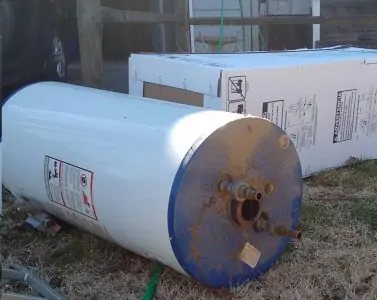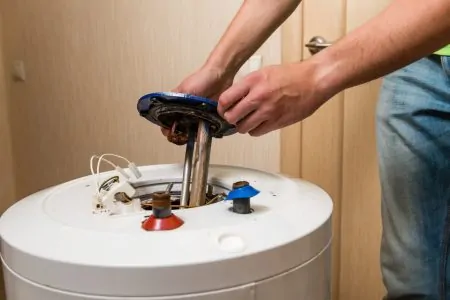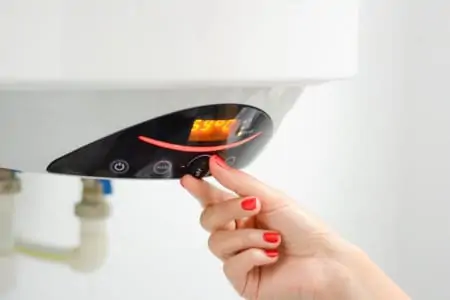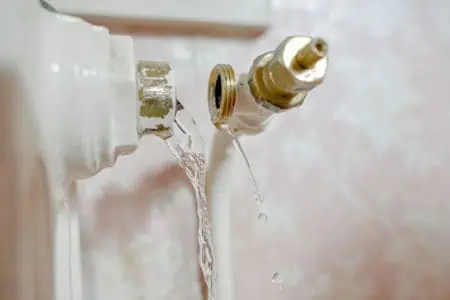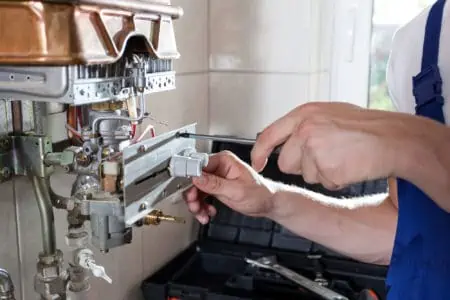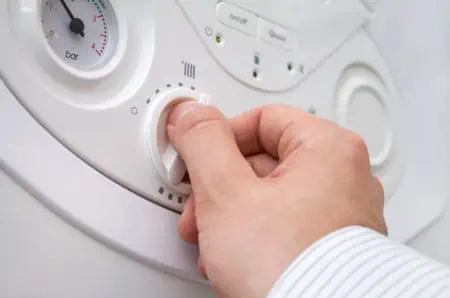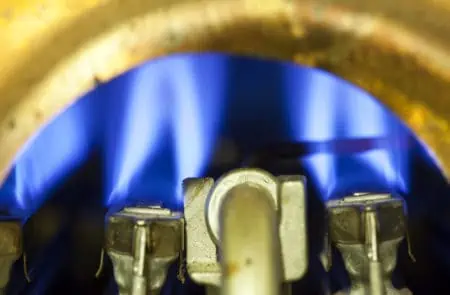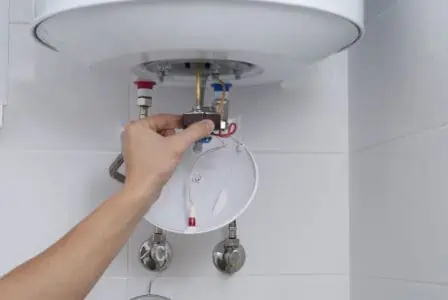Is your water heater beginning to look more like an antique than a modern piece of technology? Have you recently moved home and are worried that a unit you inherited might not last much longer?
If you answered yes to either of these questions, it’s probably a good idea to figure out how old your water heater really is. Every heater model is different and you might not know where to look to determine the age of your unit.
In this article, we will guide you through discovering the age of water heaters from some of the leading brands and manufacturers. This should leave you in no doubt about the methods of how to tell the age of a water heater.
Key Takeaways
- Find the water heater’s serial number on the side of the unit near the energy guide or warning labels.
- Decode the serial number to find the month and year of construction. This may vary depending on the manufacturer or brand.
- Consult the provided guides for leading water heater manufacturers to decipher your serial number.
- Consider replacing your water heater if it’s 10-15 years old, shows signs of corrosion, or has decreased performance.
How to Determine Water Heater Age
Determining water heater age is simple on most newer models — the installation date is usually recorded on the information label. On older models, however, you might need to do some detective work.
You should try to start by decoding the serial number — find the details toward the side of the heater. This is usually placed near the energy guide or warning labels.
The serial number contains two important details: the month and year of construction. This is where it gets a little tricky. Manufacturers tend to use unique patterns or formats, so you need to find your specific manufacturer or brand in order to do this.
To help you decipher your serial number, we have put together guides for some leading manufacturers and the various brands that use their systems.
A.O. Smith
A.O. Smith uses a very basic system that should be straightforward to figure out.
For their older, pre-1997 models, they state the year and week within the first four numbers (1) in this format: YYWWxxxxxx. Current models also use the same sequence.
For models after 1997 but before 2008, you should see a number followed by a letter ranging from ‘A’ to ‘M’ (excluding ‘I’). ‘A’ equals January and ‘M’ equals December. The two following numbers indicate the year.
Included Brands
- A.O. Smith
- PermaGlas
- Glascote
Examples of Serial Numbers
- Example 1: 9808****** (1998, week eight)
- Example 2: *F06******* (June 2006)
- Example 3: 1617******* (2016, week 17)
Rheem
Rheem also adopts a simple approach for its various brands. Their newer models (constructed after 2000) are identified by the month and the manufacture date.
In the first example below, the first and second digits represent the month. The third and fourth are the year (2).
However, in the second example, the numerical order has changed slightly. Rather than being the first four digits, it is displayed as the third to sixth. Rheem sometimes presents the key dates in this alternate way.
For their older pre-1999 models, Rheem used weeks instead of months (as shown in example two).
Included Brands
- Rheem
- Richmond
- Vista Therm
- Aqua Therm
- Energy Master
- Lowe’s
- Intertherm & Miller
- Citation
- ABS
- Mainstream
- Cimarron
- Servi-Star
- Van Guard
- True Value
- Ruud
- Coast to Coast
- Montgomery Ward
Examples of Serial Numbers
- Example 1: 1110****** (November 2010)
- Example 2: **1298****** (week 12, 1998)
Bradford White
Rather than using numbers, Bradford White uses two letters. The first indicates the year and the second signifies the month (3).
Year (1st letter)
- S = 2018
- P = 2017
- N = 2016
- M = 2015
- L = 2014
- K = 2013
- J = 2012
- H = 2011
- G = 2010
- F = 2009
- E = 2008
- D = 2007
- C = 2006
- B = 2005
- A = 2004
- Z = 2003
- Y = 2002
- X = 2001
- W = 2000
- T = 1999
- S = 1998
- P = 1997
- N = 1996
Month (2nd letter)
- A = January
- B = February
- C = March
- D = April
- E = May
- F = June
- G = July
- H = August
- J = September
- K = October
- L = November
- M = December
Included Brands
- Bradford White
- Jetglas
Examples of Serial Numbers
- Example 1: DG******* (July 2007)
- Example 2: NK******* (October 1996)
American Water Heaters
As American Water Heaters is, as of 2001, a subsidiary of A.O. Smith, it now uses an identical serial numbering system. In our examples below, the first one is pre-2000 and the second is pre-2008.
In example one, the year is represented by the initial two digits. The next two numbers relate to the week number.
In example two, the system consists of the letters ‘A’ to ‘M’, excluding ‘I’, to represent the month. The third and fourth numbers indicate the year.
Included Brands
- American Water Heaters
- Champion
- Riviera
- Aquamatic
- Aqua Therm
- Raywall
- Best Deluxe
- King-Line
- Whirlpool
- Environtemp
- Deluxe
- Prestige
- Sentinel
- Proline
- Proline-Plus
- Aqua Temp
- Premier
- Nationaline
- King-Cleen
- Revere
- Apex
Examples of Serial Numbers
- Example 1: 9510****** (1995, week 10)
- Example 2: *E05******* (May 2005)
State Industries
For State Industries, we have three examples. This can make the process of a water heater serial number lookup a bit more complicated.
The company uses two general formats: one using only numbers and another using letters and numbers. In the first example, numbers one and two represent the year, and numbers three and four indicate the week.
In our second and third examples, State Industries uses the same code structure: letters to indicate the month and numbers for the year. However, the format of the third example is slightly different — it has an extra irrelevant number in front of the date sequence.
For the letters, they use ‘A’ to ‘M’ (excluding I) — ‘A’ being January and ‘M’ December. The two following numbers indicate the year of production. For example, 06 means 2006.
Included Brands
- State
- Kenmore
- Freedom
- Freedom/Nipsco
- Ambassador
- Ace
- Barnett
- Crosley
- Century
- Nationaline
- President
- Energy Stretcher
- Thermo-Ki
- Regency
- Reliance
- Mission
Examples of Serial Numbers
- Example 1: 1210******* (2012, week 10)
- Example 2: E03******* (May 2003)
- Example 3: *E03****** (May 2003)
Lochinvar
Lochinvar’s system is similar to Bradford White’s — they use letters for the month and year. It goes like this:
Year (1st letter)
- A = 2004
- B = 2005
- C = 2006
- D = 2007
- E = 2008
- F = 2009
- G = 2010
- H = 2011
- J = 2012
- K = 1993
- L = 1994
- M = 1995
- N = 1996
- P = 1997
- S = 1998
- T = 1999
- W = 2000
- X = 2001
- Y = 2002
- Z = 2003
Month (2nd letter)
- A = January
- B = February
- C = March
- D = April
- E = May
- F = June
- G = July
- H = August
- J = September
- K = October
- L = November
- M = December
Included Brands
- Lochinvar
- Knight
- Golden Knight
- Energy Saver
Examples of Serial Numbers
- Example 1: PA******* (January 1997)
- Example 2: XF******* (June 2001)
Navien
Navien takes a totally different approach. On newer models, you will see four numbers followed by a single letter. After this letter, there is a number indicating the year of production, followed by another letter.
On older models, Navien simply placed the year after the first four numbers. They have also chosen not to indicate in which month or week their units were built.
Included Brands
- Navien
Examples of Serial Numbers
- Example 1: ****C14X******* (production year is 2014)
- Example 2: ****-2005-****-**** (production year is 2005)
Rinnai
Rinnai products carry two serial number patterns. On newer models, letters indicate both the month and year.
For older water heaters, pre-2010, Rinnai used numerical references. The first two represent the year and the following two refer to the month.
Their current system starts from 2009 and is as follows:
Year (1st letter)
- A = 2009
- B = 2010
- C = 2011
- D = 2012
- E = 2013
- F = 2014
- G = 2015
- H = 2016
- J = 2017
- K = 2018
- L = 2019
- M = 2020
- N = 2021
- P = 2022
- R = 2023
- S = 2024
- T = 2025
- W = 2026
- X = 2027
- Y = 2028
- Z = 2029
Month (2nd letter)
- A = January
- B = February
- C = March
- D = April
- E = May
- F = June
- G = July
- H = August
- J = September
- K = October
- L = November
- M = December
Included Brands
- Rinnai
Examples of Serial Numbers
- Example 1: JB. **-****** (February 2017)
- Example 2: 04.03-****** (March 2004)
When Should You Replace Your Water Heater?
A water heater made from durable material and properly maintained should last many years. Ultimately, however good your water heater is, it won’t last forever.
Here are a few signs that could indicate your water heater is running out of steam.
1. Age of Your Unit
The first question to ask yourself is “How old is my water heater?” The overall lifespan could be in the region of 10 to 15 years. This guide should help you determine your water heater’s age.
Most experts suggest replacing your unit by the time it reaches its 15th birthday. Even if it’s still working effectively, its performance is likely to begin decreasing due to its age.
2. Less Hot Water
If you suddenly notice a decrease in your hot water, it might be time to consider a replacement.
Most people first notice lower water temperature — rather than truly hot water, it might flow lukewarm. The water heater could suddenly struggle to provide enough hot water for an eight-minute hot shower.
3. Higher Heating Bills
A considerable amount of household energy is spent on heating water — an average of 18% (4). When an old water heater begins to decline in performance, so does its efficiency. As a result, you may notice your utility bills rising.
4. Corrosion
Corrosion on your water heater is a sure sign that it’s time for a replacement. This shouldn’t appear until the unit is old and rarely does so.
One reliable way of spotting this is red discoloration in the water. Red-tinted water could mean rust inside the water heater.
FAQs
In Summary
Water heaters don’t last forever — on average, most will need to be replaced after 10 to 15 years of service. However, unless you keep track of your water heater’s birthdays, you will need to determine its age for yourself.
Fortunately, this is fairly easy as long as you know the serial number and brand name. You now have a handy guide to help you decode water heater age by its serial number and determine your water heater’s age.
